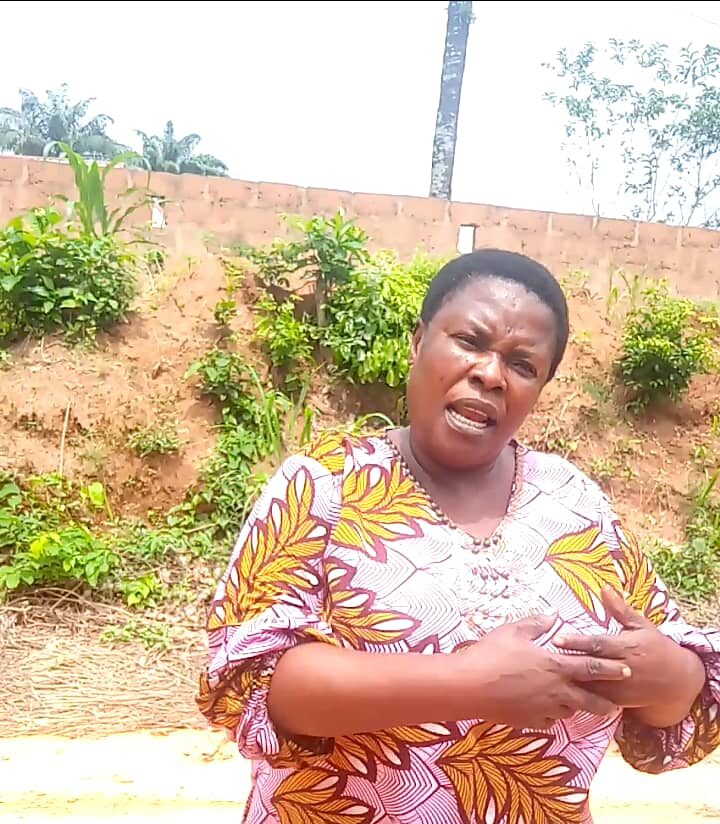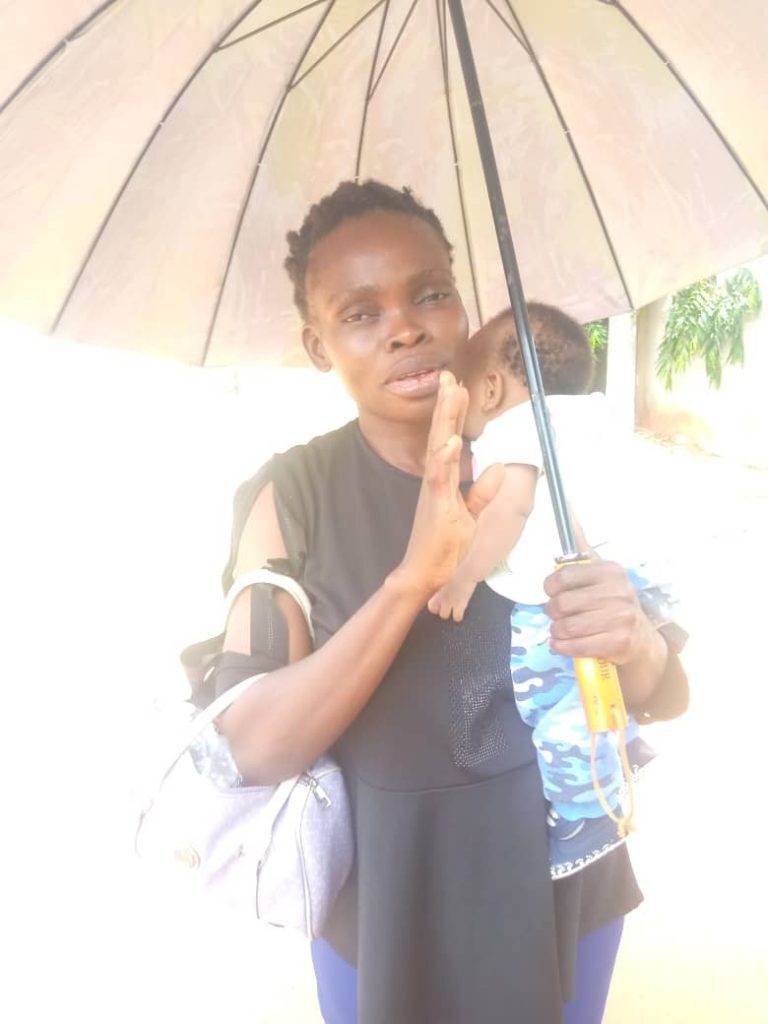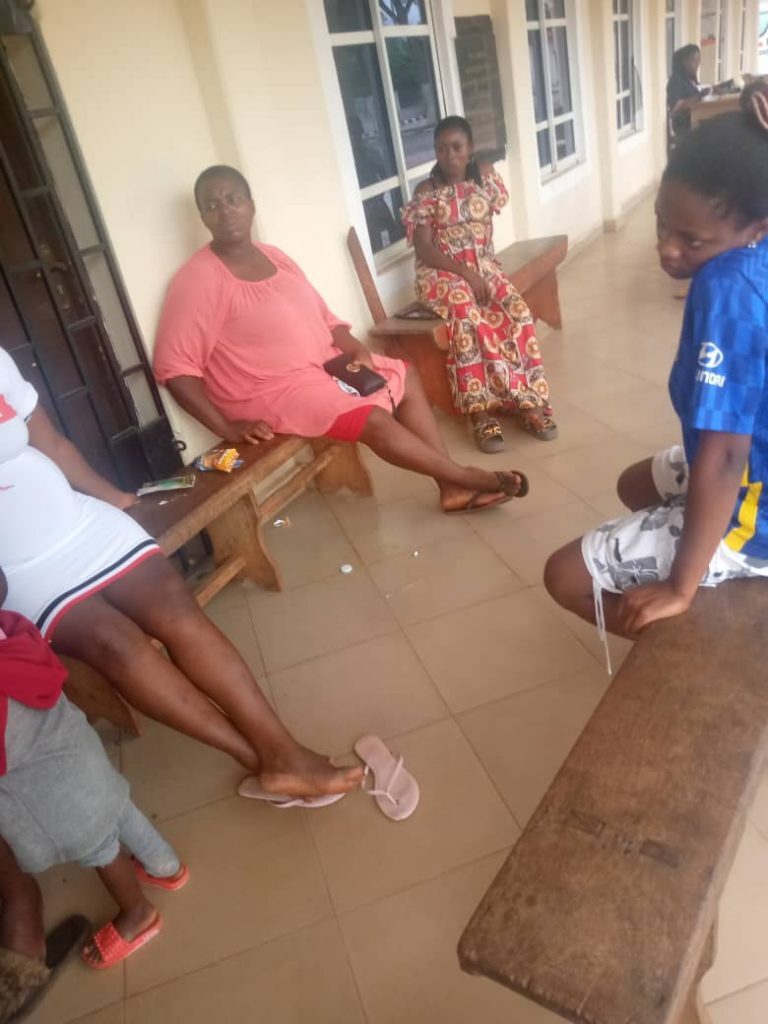Lawrence Nwimo, Awka
After a long trek, Agnes Nwafor finally makes it to the Primary Health Centre (PHC) in her Nawfija community in Orumba South. She is pregnant and due for a clinic visit.
But there is no health worker at the centre. Her saving grace is anauxiliary nurse who lives in the area.
Though not a professional in the field, the nurse was able to administer treatment to Nwafor and advise her to keep checking at the health centre for proper examinations and treatment.
The PHC in Nawfija is one of 332 enrolled under Basic Health Care Provision Fund, BHCPF, in Anambra state.
The expectation is to provide quality health and maternal care services to the rural dwellers who are mostly peasant farmers and
petty traders.
The Midwife Services Scheme
A World Health Organization report on Nigeria in 2019 revealed that issues of quality and delays in accessing adequate care play a major part in the occurrence of maternal deaths.
By 2021, WHO reported a maternal mortality rate of 814 per 100,000 live births for Nigeria, and noted that the high number of maternal
deaths reflected inequities in access to health services, and highlighted the gap between the rich and poor.

According to the report, women in remote areas are the least likely to receive adequate healthcare. This is especially true for regions with low numbers of skilled health workers.
It also said that shortage of midwives will trigger an increase of one million by 2030 with serious implications for the attainment of
Sustainable Development Goals.
The Midwives Service Scheme was started in 2009 by the Federal Government to address the scarcity of skilled health workers in rural
communities by temporarily redistributing midwives from urban to rural communities.

The scheme was implemented as one of the country’s Millennium Development Goals projects to recruit new graduates from schools of midwifery, unemployed midwives and retired but able midwives for deployment to health facilities in rural communities for a one-year community service.
Serving in the scheme was mandatory for the new graduates as a prerequisite for licensing to practice in Nigeria.
Conflicting reports
On 26 July, the OrientDaily reporter visited Primary Healthcare Centre, Nise in Awka South LGA, one of many targeted centres to assess how the MSS is impacting health care in Anambra state.
“As a midwife, I know about the scheme,” says the officer-in-charge of the facility.
“It is all about those who graduated from the school of midwifery and expected to serve the government for one year, while the government would be paying them a token of N30, 000 at the end of the month, just like the NYSC.
“But the scheme no longer exists in the state,” she said.
The reporter visited the Anambra State Primary Health Care Development Agency, ASPHCDA on August 4 and was referred to Chikamso Obiechefu, the Programme Officer of Anambra State Emergency Maternal Child Health Intervention Centre, a department in the agency.

“It is true, we do not have MSS in Anambra State anymore and though there was a period the national body, National Primary Health Care Development Agency (NPHCDA), said there would be training on it but that has not been carried out,” she said.
But in a telephone interview with the Chairman Nurses and Midwives under the aegis of National Association of Nigerian Nurses and Midwives (NANNM), Anambra State Council, Edith Onwuka, gave a different response that the midwife scheme is still functional in the state, though she complained that the scheme is poorly handled and inadequately financed.
It is understood that official implementation of the scheme ended in 2016, but the presence of the Basic Health Care Provision Fund, which allows health centres to hire personnel, is currently helping with the recruitment of midwives as well.
Also in a telephone interview, the Head of the Department of Reproductive Health, Anambra State Ministry of Health, Dr. Uju Okoye said, “The scheme is still being implemented in Anambra State but under the umbrella of the Basic Health Care Provision Fund.
MSS came into existence in 2009 under Federal government funding and later SURE-P, [Subsidy Reinvestment and Empowerment Programme]. At a stage, the scheme was no longer funded and it stopped around 2016-2017.
“Then in 2021, it started again following the implementation of the Basic Fund which Anambra state is one of the beneficiaries. In 2021, the state employed 61 midwives under the scheme to work in 21 LGAs.
Each LGA has 3 or 4 four midwives employed under the scheme but we are still pushing for regularization because they are being paid peanuts.”
However, observations by the reporter who randomly monitored 30 primary health facilities across five local government areas showedthat the scheme was non-existent in the state. The result is both suffering on the part of health workers and delayed healthcare
delivery to the people.
 Pregnant women endlessly waiting for antenatal care at Awkuzu Model primary health Centre.
Pregnant women endlessly waiting for antenatal care at Awkuzu Model primary health Centre.
Virtually all the staff who spoke to the reporter complained that the PHCs would have been recording more professional service delivery but for the inadequacy of required healthcare workers.
Workers’ Ordeal
Virginia Nwafor was done with the day’s work, but unknown to her, bigger tasks still awaited her. It was one of those restless nights
when she had to lead series of women through labour. On this day, three women gave birth in the PHC, but it was not an easy task for her because she was the only medical staff in the PHC.
It was 17 years ago when Nwafor was engaged as a midwife at Lomu Umunze PHC in Orumba South Local Government Area. Little did she know that in no distant time, she would be having the nightmare of handling the entire affairs of the facility alone.
“I am the only staff in this facility. We were eight health workers brought to the PHC in 2004 by the local government but others have
left. I am the only person remaining,” she says.
The OIC at Nise Health centre, Ifeoma Obih, also lamented that she cannot get time off to visit her family because there are no competent hands to help her.
“I just left the facility few hours ago to take my bath because I spent the whole night in the labour room for series of child deliveries. I barely have a time of my own because the workload is much on me.”
“Our capable hands leaving us”
Head of Health Department in Anambra West LGA, Peter Igwema, attributed the shortage of health workers in the council area to
underdevelopment and the lack of basic amenities in the locality.”
He said most workers posted to the area were not able to adapt to the rural lifestyle of the people.
“Our biggest challenge in providing health workers in Anambra West is that each time the state agency posts capable hands to us, they return to the agency in Awka to lobby to be posted to another place,” he said.
“They tend to avoid the mosquitoes which are in the area because the council area is surrounded by water and bushes, coupled with the fact that the facilities are yet to be provided with mosquito nets.
“Again, the road network of the area is not encouraging for any worker because the roads are terribly bad. In fact, during rainy seasons, most of the communities are overrun by flood and they relocate to the camps for internally displaced people.”
Lives Now In The Hands Of Volunteers
Two residents of Nawfija in Orumba South LGA complained that the OIC in the area, who is also the midwife, abandoned a house built for staff in the facility for faraway Ezira community from where she reports to work occasionally.
One resident and farmer, Paulinus Nwafor, regretted that the midwife’s constant absence has made the people of the community lose interest in the services being rendered at the facility. They increasingly prefer traditional birth attendants for deliveries and other medical attention.
In the same vein, a woman, Lovelyn Okoli, while expressing her anger at the absence of her PHC health attendant said, “You are seeing what we are passing through. What I came here for is treatment. Okay, now that I am here, the staff who was supposed to attend to me is not around and the distance I trekked to this place is too much for a sick
person.
“We have complained about this in our women’s August community meetings. Sick people and pregnant women come here and do not see the midwife because she lives elsewhere.
She blamed the frequent absence of midwives as the major reason women of the community prefer to patronize privately owned facilities and quacks.
A look through Nawfija PHC’s register showed that despite the population of women resident in the community, only nine child deliveries had taken place in the facility from January to July 23, 2022.
Implications and deaths
A meeting to review maternal mortality found 20 women died from pregnancy- related complications in Anambra from January to June 2022.
The electronic platform of the Reproductive Health Department of Anambra State Ministry of Health confirmed the deaths occurred in
facilities in hard-to-reach areas.
At the review, a consultant community physician at the Nnamdi Azikiwe University Teaching Hospital, Nnewi, Dr Chinomso Nnebu, reported that many pregnant women now prefer to patronize faith-based organizations instead of hospitals—but with attendant risks.
“Some faith-based organizations will keep pregnant women and pray for them instead of advising them to go to health facilities.
“They keep them until the women develop complications before referring them to health centres, and by that time, it is already late,” he said.
ASPHCDA Attempts To Remedy The Shortage
The Anambra State Primary Health Care Development Agency (ASPHCDA) on June 3, 2021 recruited 60 out of 700 midwives who applied for adhoc staff vacancies to aid healthcare service delivery across PHCs from
the Basic Health Care Provision Fund in the state.
The midwives were under the REWSBA, an acronym for Reach Every Ward with Skilled Bed Attendants.
“Already, there are over 600 PHC facilities in the state but the 60 midwives are only working in facilities that are enrolled under the Basic Health Care Provision fund,” Obiechefu, of ASPHCDA, said.
The employees contracted under BHCPF receive N30, 000 monthly. But the agency is still waiting for the state government to incorporate them into the state civil service by the time their contract expires.
“ASPHCDA is also planning to recruit more 25 midwives in two weeks time to bring the total number of midwives in the state under BHCPF to 85, it will help beef up manpower at the facilities that are lacking adequate midwives in the state.”
Still, 70 percent of PHCs understaffed
Despite the engagement of 60 midwives by ASPHCDA, majority of PHC facilities in the state still lack the required number of staff
recommended for the minimum healthcare package in primary health care.
“There are lots of challenges in midwifery in Anambra State. At times, I get angry with the implementation of the policy,” maintains Onwuka, chairman of NANNM council in Anambra.
“When you look at the healthcare system in Anambra State, you would ask yourself whether they are following the MSS requirements.
One issue, she says, is the engagement of only 60 midwives for over 600 PHCs across the state.
“All the wards in Anambra State, at least, have one Basic Health Care facility which is expected that midwives should stay there to render professional and effective maternal and child care but the issue is that those engaged as midwives are not enough,” she said.
“The minimum healthcare package of primary health care says that every primary healthcare facility must have a minimum of four midwives. But I’m telling you that 70 Percent of the PHCs don’t have enough midwives; instead, they are headed by community health extension workers and we expect mortality to reduce.”
Poor remuneration, with midwives paid N30, 000 monthly, has forced the migration of qualified nurses to either federal health institutions or outside the country in search of greener pastures.
“This has adversely affected health care delivery as the small numbers of nurses that remain are overwhelmed by work in our hospitals,” She said.
“The remuneration is poor and it is insufficient to sustain the midwives. In the rural areas where some of these people are working,
there is no network and at the end of the day, they are given N300.
If it is a midwife or a nurse that has family, the money cannot do anything for her.
“If they want the MSS to work effectively, they should look at the welfare package and not the temporary engagement. They should employ permanent staff or incorporate them into the regular civil service to solve some of these problems.”
Government blames COVID
The government blames the Corona Virus pandemic and medical brain drain for the paucity of health workers.
“That is the problem Nigeria has and not just Southeast,” says head of the Department of Reproductive Health, Anambra State Ministry of Health, Dr. Uju Okoye.
“The majority of our healthcare workers including the nurses left the shores of the country immediately after COVID-19 pandemic.
“Majority of the hospitals outside Nigeria was hit by Covid and many medical staff died during the pandemic. So, they needed some
healthcare workers and because of the adverts, a lot of the workers in Nigeria moved over to the foreign land.”
She attributed the 20 maternal deaths on record to the practice of women visiting privately-owned hospitals instead of the qualified public facilities for childbirth.
She said: “In maternal health in Anambra State, we have the skilled birth attendant, made up of the nurses, doctors, midwives and thevcommunity health extension workers.
“But more than 40% of the pregnant women in Anambra State attend private hospitals against the public hospitals and when they do so and were unfortunate to be in a private hospital that has no required equipment and skill, they end up coming to the public hospitals as a complication instead of first hand it supposed to be.”
Renewed hope
Anambra’s new government led by Chukwuma Soludo is faced with addressing existing personnel shortage in health care.
One move is granting approval to recruit health workers, but recruitment tests are yet to be completed and their start of work is
in the future, said Okoye.
“The state government has also tried to bridge the gap by instituting a maternal mortality review which was done for the first time in Anambra State to review all the deaths of women during pregnancy or 28 days after delivery.
The state has held it’s first-ever mortality review on maternal deaths between March and June this year—in nine facilities across the state.
“A panel was put in place to review the cause of the deaths and the possible ways to alleviate the deaths,” said Okoye.
Maternal Healthcare A Work In Progress
Anambra State commissioner for Health, Dr Afam Obidike told the reporter that maternal healthcare in the state is a work in progress. “We cannot solve all the problems in 617 PHCs in the state at once, the Commissioner for health.
“We are working to address it aggressively and the government have already advertised for doctors and we had them interviewed two weeks ago and awaiting to interview more. The first stage is to attract health personnel by employing them, then, the second stage would be to improve our training institutions that would train our midwives to ensure they produce enough quality manpower to fill the gaps.
“The engagement would be based on the number of the retirees, resignations and the transferred. We are in the process of recruiting and the last time the state recruited health workers was in 2013 but now, the government is on the verge of recruiting again and recruitment is a continuous process.”
He said the 20 maternal deaths recorded in the state was true and emphasized it was only in nine maternal centres and not in the entire PHCs in the state.
“The government should be commended for carrying out a maternal mortality review. What we did was for the first time in the state; invite a professor of gynecology, all the midwives and health workers in all the health facilities that were involved to a discussion. The essence was to brainstorm on the way forward to avert such incidents in the future,” he posited.
The current administration in Anambra state is working assiduously to strengthen health institutions for comprehensive healthcare delivery especially in public health facilities.
The hope is to ensure things are right for when Nwafor, after trekking kilometres to get to a health centre, has a safe delivery.
This report is supported by the International Budget Partnership IBP and the International Center for Investigation Reporting ICIR.

Prev Post
Why I joined senatorial race in Anambra – YPP candidate, Umeadi
Next Post
Be careful of Wike, Primate Ayodele warns PDP
